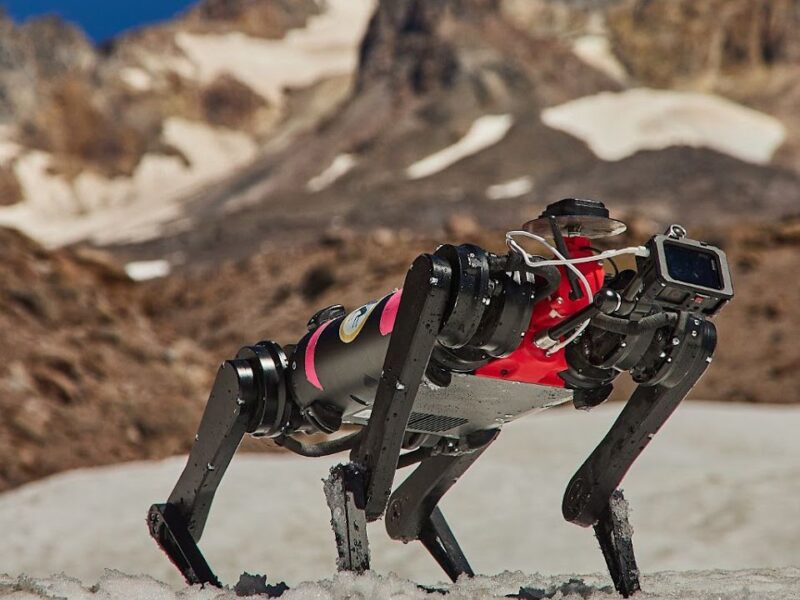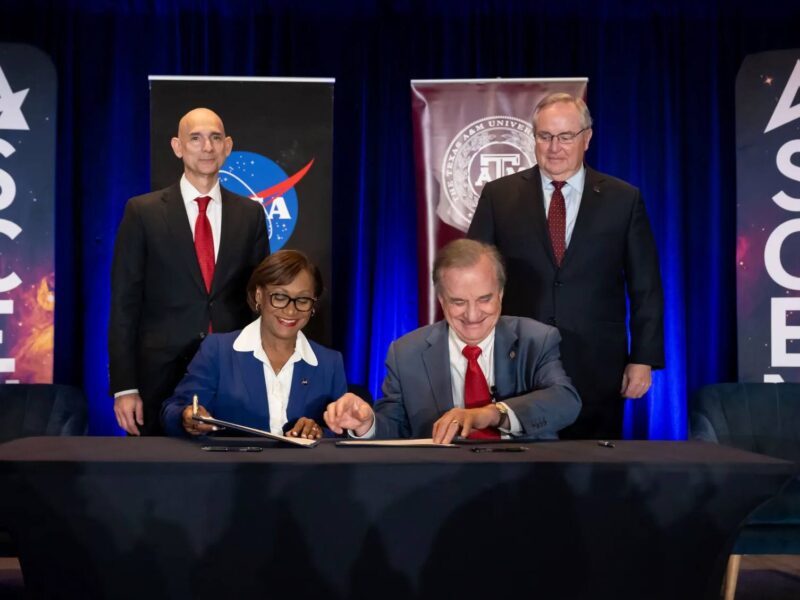Spaceflight Research Takes Off At Texas A&M

Astronauts get to experience things no other humans do, like see Earth from afar, travel where no other humans have been and make new discoveries. But while spaceflight offers priceless intellectual advancements, the weightlessness of space can have negative effects on astronauts’ bodies.
Through a series of fortunate events and a lot of hard work and dedication, researchers at the Texas A&M Health Science Center College of Medicine are collaborating with other Texas A&M University partners, including the Dwight Look College of Engineering and College of Education and Human Development’s Department of Health and Kinesiology, to find new medical discoveries in space. But it’s not just astronauts who benefit—these discoveries have the potential to unlock medical discoveries on Earth: in this case, inflammatory bowel disease and risks of cancer treatment.
Young scientists, led by David Zawieja, Ph.D., Regents Professor and interim chair of the Department of Medical Physiology at the Texas A&M College of Medicine, are working on research projects supported by the National Space Biomedical Research Institute (NSBRI) and NASA. The NSBRI, a unique, non-profit science institutional consortium established by NASA to ensure safe and productive human spaceflight, is working on countermeasures to the physical and psychological challenges humans face on long-duration missions.
Zawieja, who is also director of the Division of Lymphatic Biology at the College of Medicine, focuses his research on the lymphatic system, a component of the circulatory and immune systems pivotal for transporting fluids, large molecules, white blood cells and immune cell signaling proteins from all regions of the body through the nodes to the mainstream circulation. Problems with the lymphatic system can lead to a build-up of fluid (also know as lymphedema) and impairment of immune functions.
So what does that have to do with spaceflight?
A lot, as it turns out. Spaceflight and its accompanying microgravity cause a number of changes to the human body: bone and muscle loss, immune dysregulation, increased risk of cancer and changes to the cardiovascular system. Without gravity, the pressure gradients from top to bottom of a person are drastically altered. The lymphatic system is very sensitive to pressure gradients, and it is this concern that led Zawieja’s lab to focus on space research 12 years ago while working with Michael Delp, a cardiovascular physiologist now at Florida State University and a long-time NASA-funded investigator.
Anand “Sunny” Narayanan, a graduate research fellow, and Walter Cromer, Ph.D., a postdoctoral research associate, both trainees in Zawieja’s lab in the College of Medicine’s Department of Medical Physiology, are supported by and working on projects relevant to NSBRI’s research objectives. By investigating tissue samples from ground-based space analogue animal models and from spaceflight missions, they are furthering our understanding of the role the lymphatic system has in the context of spaceflight adaptations.
“Our lab group interacts with many groups without clinical backgrounds, which really opens us up for new research avenues,” Zawieja explained. “The beautiful thing about working with NASA and NSBRI is that this interdisciplinary model is already in place and accepted, so it works very well with our group for these types of research interests.”
Two heads are better than one: How Texas A&M is a unique proving ground for collaborative research
Narayanan, who has undergraduate degrees in mechanical engineering and biology, said he came to Texas A&M specifically because of the leading space life science researchers and the NASA/NSBRI-funded Mentored Research Graduate Program in Space Life Sciences (SLS).
Narayanan’s primary research interests include the effects of radiation—whether from spaceflight or clinical radiation exposure—on the lymphatic system and how that may cause damage as well as inflammation. This is an important area for a number of reasons. Firstly, radiation exposure becomes a greater issue when planning long-term trips to the moon and Mars because of the extended time outside the safety of earth’s atmosphere. Furthermore, radiation changes to the lymphatic system are relevant to cancer patients undergoing radiation therapy, as lymph nodes and the corresponding surrounding lymphatic vasculature are the primary sites of therapy in metastatic cancers.
Continue reading on Vital Record.
This article by Katherine Hancock originally appeared in Vital Record.




